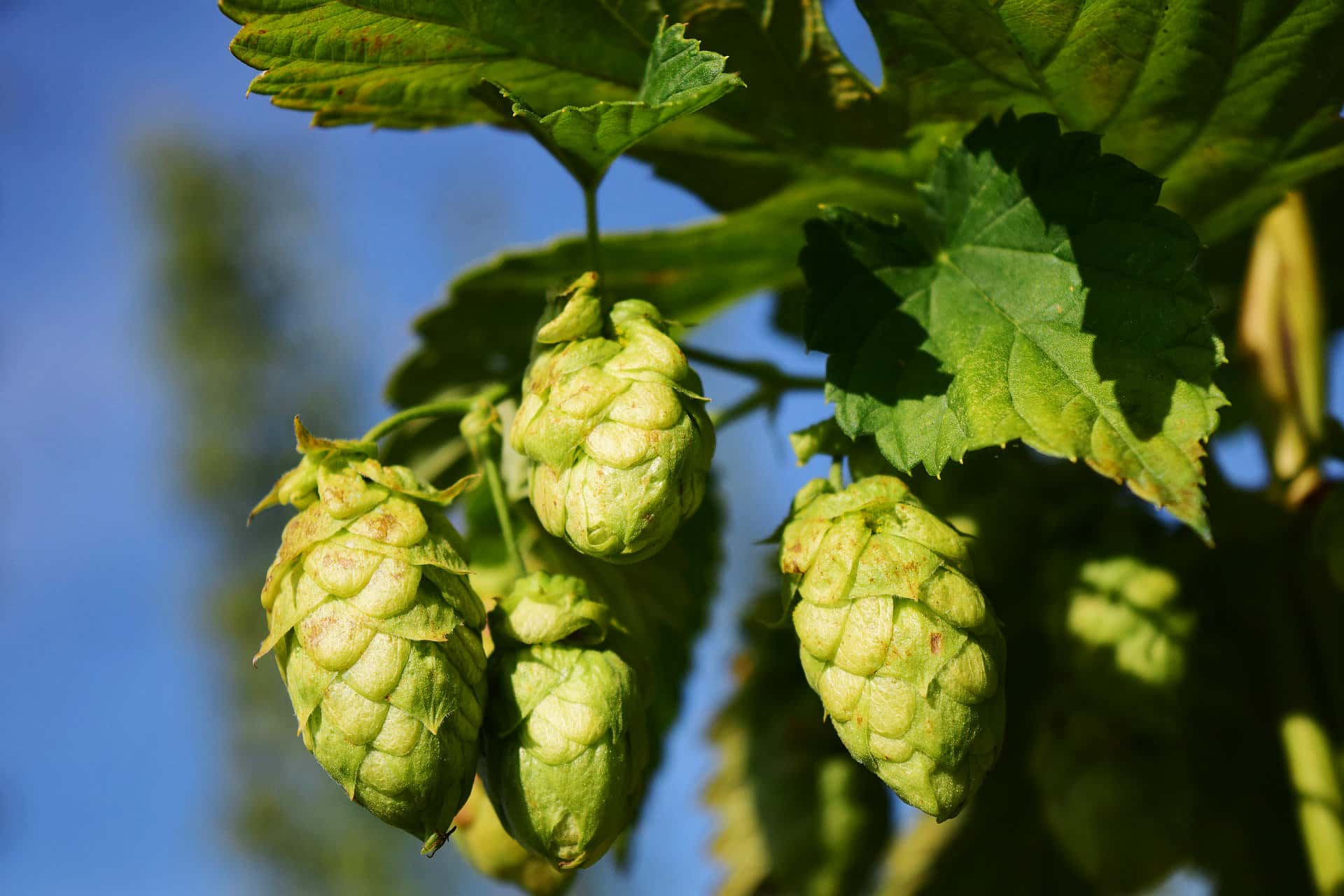
Hops have been used to flavor beer for nearly a thousand years. This plant, a member of the same family as marijuana, is cultivated commercially in England, Germany, the Czech Republic, and the United States, as well as parts of South America and Australia.
The part of the plant used, the cone-like fruits (technically “strobiles”) called hops, are harvested in September, at least in the northern hemisphere.
Early medicinal uses of hops came from observation of the pickers. They were said to tire quickly, so the plant was believed to have sedative activity.
The hops were sometimes placed in a pillow to improve sleep. In addition, they have been used to treat a variety of skin conditions.
Some of the folklore surrounding hops pickers suggests that the women are more interested in sex and the men less. This has been interpreted to suggest that hops may have estrogenic activity.
Active Ingredients
The bitter principle humulone is the most important ingredient in brewing beer.
Hops contain approximately 1 percent of a volatile oil and one hundred other compounds including several polyphenols, tannins, and flavonoids.
The specific composition differs from one variety of H. lupulus to another. Many of these compounds break down quickly when exposed to light or air.
Uses
Scientists have recently isolated an ingredient in hops that might account for their mild sedative properties. In Europe, many herbal medicines include hops in a combination designed to promote sleep or relieve anxiety and stress.
Hops extracts are also used to pep up the appetite and stimulate gastric juice secretion. The extracts can calm smooth muscle spasm, which would explain the traditional use of hops to treat intestinal cramps and menstrual pain.
Recent studies demonstrate that some chemicals in hops bind to estrogen receptors in the test tube.
Hops did not stimulate the growth of rat uterine tissue, though, and their use to treat symptoms of menopause has not been clinically verified.
In European folk medicine, a small bag of hops soaked in alcohol was placed on inflamed skin to relieve it. It is unclear whether there is any scientific basis for this practice.
Dose
The dose is 0.5 g before bedtime. This may be taken as part of a prepared herbal medicine, or made into a tea by pouring boiling water over a heaping teaspoon of the dried hops and steeping for ten to fifteen minutes before straining and drinking it.
Special Precautions
Estrogenlike compounds such as those in hops should be avoided during pregnancy.
Adverse Effects
Some people develop contact dermatitis (itchy rash) when exposed to hops.
Possible Interactions
Extract of hops can increase the amount of time a mouse sleeps after being given a barbiturate.
Although the effect of hops is mild, combining this herb with a sleeping pill or antianxiety drug could result in more sedation than expected.
Until the estrogenic activity of hops is further studied, taking this herb in combination with medicines such as oral contraceptives or hormone replacement therapy is an experiment best avoided.

